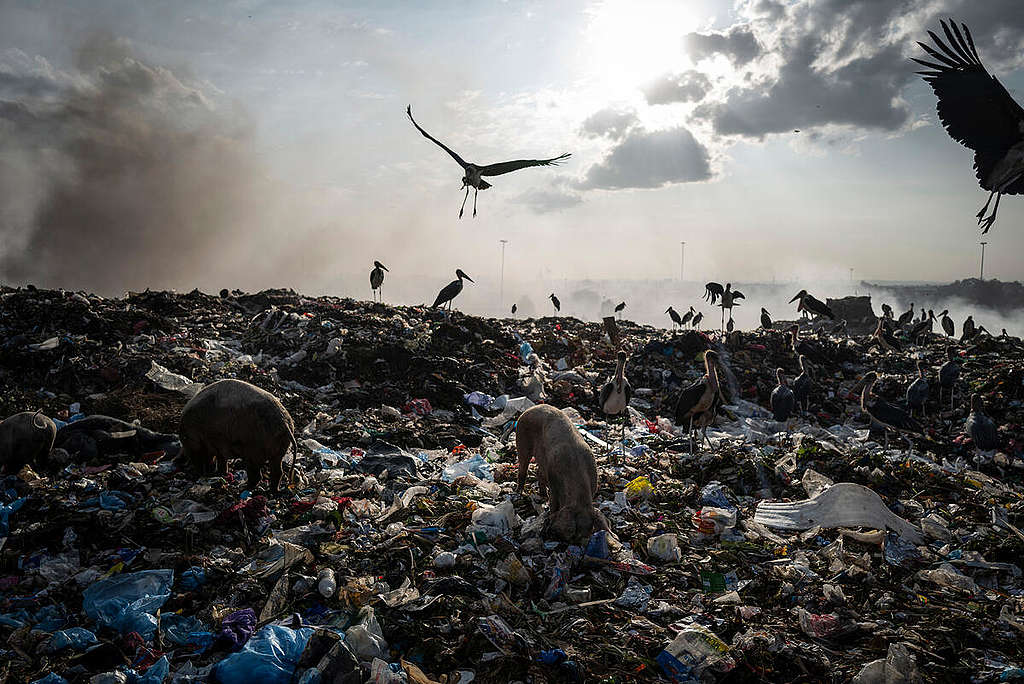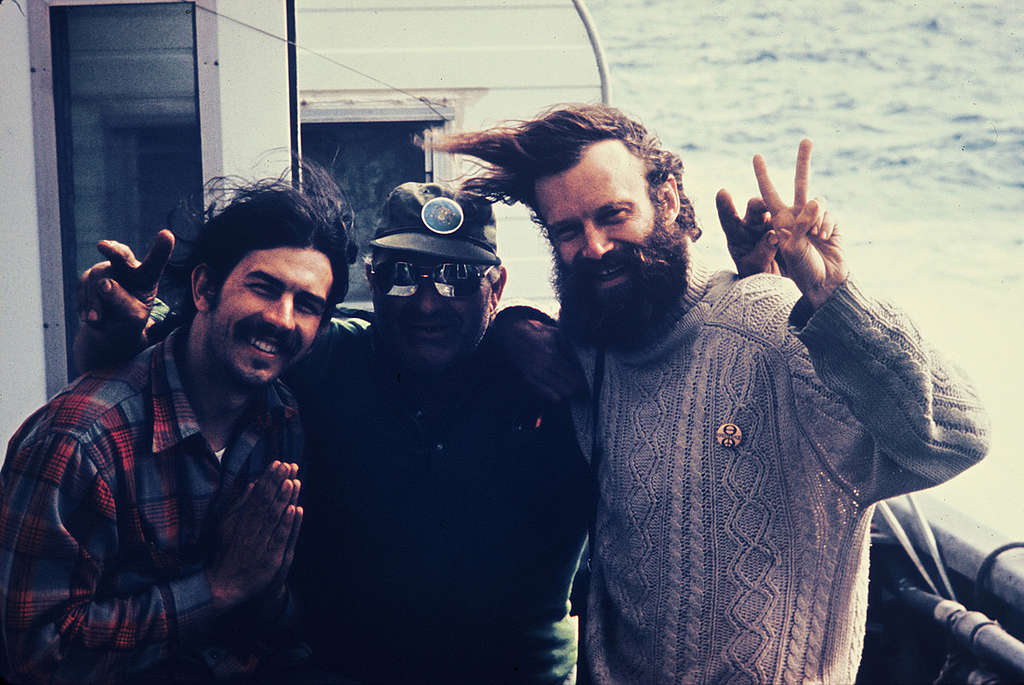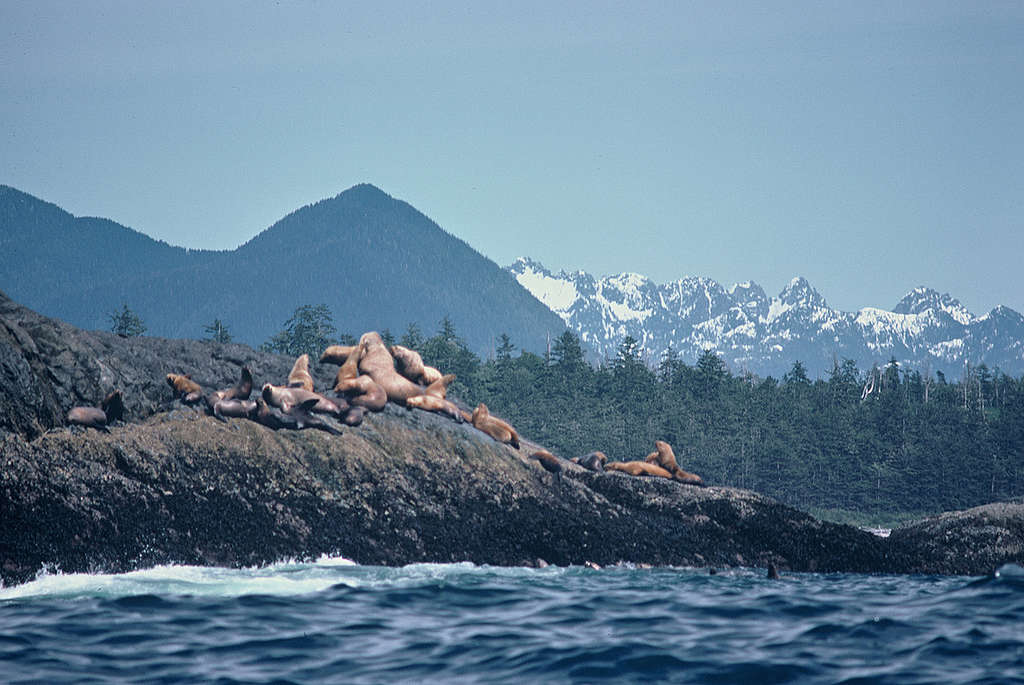Last year marked the 50th anniversary of Greenpeace, and this year the 50th anniversary of a book that set much of the ecological agenda for the five decades since: The Limits to Growth, commissioned by the Club of Rome, and compiled by four distinguished systems scientists at Massachusetts Institute of Technology (MIT) Donella Meadows, Dennis Meadows, Jørgen Randers, and William Behrens (Signet, 1972).
The Limits to Growth authors used a computer model ("World3") to track growing per-capita consumption, population, industrial production and agricultural production, plotted against resource depletion and levels of pollution, including CO2. They mapped out 12 future scenarios, depending on various social interventions that might mitigate a large-scale catastrophe. With no intervention, their converging trend lines suggested serious ecological crises early in the 21st century, that is, roughly now.

The 1970s witnessed a deluge of ecological awareness and literature, roused to a great extent by Rachel Carson's 1962 Silent Spring and by common experiences of oil spills, toxic pollution, and disappearing species. (See a bibliography of 1970s ecology books below).
In 1972, after the world's first global environmental conference in Stockholm, Barbara Ward and Rene Dubois published Only One Earth: The Care and Maintenance of a Small Planet (Penguin, 1972). Farley Mowat's 1972 A Whale for the Killing, (McClelland and Stewart) inspired the 1975 Greenpeace whale campaign, and Barry Commoner's 1971, The Closing Circle, influenced the Greenpeace "Laws of Ecology." These and other ecology writings inspired me in my transition from a physics and engineering student to an ecologist and journalist.

The "Three Laws of Ecology," published by Greenpeace in 1976, emphasized ecological interdependence, diversity, and finiteness. The Limits to Growth authors rigorously examined this last characteristic of ecosystems, the fact that energy and material resources are finite and therefore impose limits on the expansion of all species. The book sold over 12 million copies in 37 languages, the best selling ecology book of all time.
Bring on the Attack Dogs
In 1972, the fact that ecosystems place limits on growth was not a radical or controversial idea among ecologists and biologists. Nevertheless, the idea challenged some hallowed assumptions of mainstream industrial society: Human exceptionalism, unlimited growth, and the endless expansion of wealth. Ecology, a recognition of natural law, transcended liberal and conservative ideologies about how the spoils of industrial growth should be shared. Ecology questions industrial growth itself.
Establishment economists and mainstream media attacked The Limits to Growth viciously. Within a week of its publication, in Newsweek magazine, Yale economist Henry Wallich, dismissed the book as "a piece of irresponsible nonsense." Later, U.S. president Ronald Reagan declared "There are no great limits to growth, when men and women are free to follow their dreams."
This inspiring Reaganism expresses the essence of human-exceptionalism, the attitude that nothing can stop or limit humanity from achieving whatever people desire, at any measure, at any scale, in any numbers. Since humanity has become so successful at occupying and consuming resources from every ecosystem on Earth, it is easy to see how these notions of exceptionalism arise. Nevertheless, these are anti-ecological ideas, presuming that humans — through cleverness, imagination, and technology — can flourish outside the biological constraints of all living organisms.
The attacks continued over decades, and critics typically misrepresented the book. In 2000, Amy Myers Jaffe and Robert Manning wrote in, Foreign Affairs, "In its dramatic 1972 'Limits to Growth' report, the group of prominent experts known as the Club of Rome wrote that only 550 billion barrels of oil remained and that they would run out by 1990."
In 1989, Ronald Bailey attacked Limits to Growth in Forbes magazine, calling the book "wrong-headed." He continued his attack in Eco-Scam: The False Prophets of Ecological Apocalypse, a diatribe full of errors and misrepresentations. Bailey claimed, "In 1972, The Limits to Growth predicted that … the world would run out of gold by 1981, mercury by 1985, tin by 1987, zinc by 1990, petroleum by 1992, and copper, lead, and natural gas by 1993."
The problem with these diatribes by Jaffee, Manning, Bailey, and others, is that the book makes no such predictions. The critics simply invented false predictions and then attacked them. In 2000, economist Matthew Simmons wrote in Energy Bulletin, "After reading The Limits to Growth, I was amazed … There was not one sentence or a single word written about an oil shortage, or limit to any specific resource, by the year 2000. … The most amazing aspect of the book is how accurate many of the basic trend extrapolations still are."
It appears that most of the book's critics never actually read it. The outrage they express appears to be ideological: How dare these Earth scientists suggest that there are limits to human ingenuity! Furthermore, these attacks presaged our own era of bad-faith misinformation attacks by climate change denialists and limitless-growth advocates.
What the book really says
The Limits to Growth did not actually make any predictions. Rather the authors offered 12 scenarios that might unfold on Earth between 1972 and 2100, based on whether or not humanity recognized the ecological risks, and took appropriate action. The first scenario, the "standard run," was based on "business as usual," with no intervention, and forecast serious ecological crises in the early 21st Century, as we now witness all around us.

The second scenario allowed for technological advances that might double human access to resources. This scenario also led to crisis, delayed by a few decades. The other 10 scenarios estimated the effects of interventions, individually and in combination, including: Recycling, pollution controls, soil restoration, stabilizing population, restricting economic growth, and extending the lifespan of industrial assets by eliminating planned obsolescence.
Some of these interventions have hardly been contemplated, none has been achieved on the global scale that the The Limits to Growth authors proposed, and as a result, we now find ourselves facing precisely the ecological crises forewarned in the "business as usual" scenario: Global heating, dying coral reefs, biodiversity collapse, dead lakes, drained aquifers, polluted waterways, endocrine disruptors and toxic chemicals in our bodies, supply chain disruptions from depleted resources, and a global pandemic, which is itself aggravated by human crowding and diminished wilderness habitats.
Lead author, Donella Meadows, passed away from cerebral meningitis in 2001, but spoke with Alice Friedemann at Energy Skeptic that year. "We were at MIT," she said, "we had been trained in science. The way we thought about the future was utterly logical: if you tell people there's a disaster ahead, they will change course. If you give them a choice between a good future and a bad one, they will pick the good. They might even be grateful. Naive, weren't we?"
In 1972, atmospheric carbon dioxide concentrations stood at 325 parts per million (ppm). The Limits to Growth authors projected that, without intervention, concentrations could reach 380 ppm by 2000. The actual concentration in 2000 was 370 ppm and is now over 420 ppm, the highest in some 4 million years, and now growing at the rate of about 3ppm per year.
The authors pointed out that there would be severe ecological costs to intensive industrial agriculture that required fossil fuels, fertilizers, pesticides, and massive irrigation. Those costs now include global heating, soil degradation, habitat and biodiversity loss, toxic pollution, bee colony collapse, nutrient cycle disruption, fresh water depletion, and diminishing agricultural returns from additional fertilizer and pesticide use.
Since 1972, human population has doubled, industry has continued to profit from planned obsolescence, particularly in the technology markets for phones and computers, and our consumption of resources has more than tripled, from about 30-billion tonnes/year (t/yr) in 1972 to 100-billion t/yr now.
Limits to Growth was right
Cassandra, the Trojan priestess of Greek mythology, earned the power to see the future, a gift from her admirer Apollo. When she scorned him, he could not revoke his gift, but took revenge by cursing her that no one would ever believe her.
Before she died, Donella Meadows worked with Jorgen Randers and Dennis Meadows to complete Limits to Growth: The 30 Year Update, (Chelsea Green). In a Summary of the 30-year research, she wrote: "In 1998, more than 45 percent of the globe's people had to live on incomes averaging $2 a day or less. Meanwhile, the richest one-fifth of the world's population has 85 percent of the global GNP. And the gap between rich and poor is widening. … Sea level has risen 10-20 cm since 1900 … 75 percent of the world's oceanic fisheries were fished at or beyond capacity .. 38 percent, or nearly 1.4 billion acres, of currently used agricultural land has been degraded … and nothing that has happened in the last 30 years has invalidated the book's warnings. These are symptoms of a world in overshoot, where we are drawing on the world's resources faster than they can be restored, and we are releasing wastes and pollutants faster than the Earth can absorb them."
Dennis Meadows recently told Richard Heinberg of the Post Carbon Institute, "Whatever we recommended then certainly is not relevant now. In 1972, the impact of humanity on the globe was probably below sustainable … the goal then was to slow things down before we hit the limit.

"Now it's clear that the scale of human activities is far above the limit," he said. "And our goal is not to slow down, but to get back down: to find ways to maneuver the system, in a peaceful, equitable, hopefully fairly liberal way, and bring our demands back down to levels that can be borne by the planet. … One reason technology and markets are unlikely to prevent overshoot and collapse is that technology and markets are merely tools to serve goals of society as a whole. If society's implicit goals are to exploit nature, enrich the elites, and ignore the long term, then society will develop technologies and markets that destroy the environment .. that hasten a collapse instead of preventing it."
In 2014, Graham Turner at the University of Melbourne completed a 40year update: "Is Global Collapse Imminent? An Updated Comparison of The Limits to Growth with Historical Data." Turner gathered data from UNESCO, the UN Food and Agriculture Organization, US national oceanic and atmospheric administration (NOAA), the British Petroleum statistical review, and other sources, plotted alongside the Limits to Growth scenarios. The Guardian published his charts showing that world food sources, industrial output, population, pollution, and resource decline all tracked closely to the 1972 "standard run" that led to crisis. The Guardian concluded, as did Graham Turner, "Limits to Growth was right."
In 2016, the United Nations International Resource Panel (IRP), published "Global Material Flows and Resource Productivity," a report that admits what Limits to Growth warned of decades earlier: Resources are limited, human consumption trends are unsustainable, and the resource depletion diminishes human health, quality of life, and future development.
Being an ecologist means rarely taking pleasure in being proven correct about the scale of our crisis. Before she died in 2001, Donella Meadows said: "I think we are headed for disaster. That thought does not thrill me, and it does not panic me into trying to fashion a world so controlled that it is actually predictable. Rather it energizes me to work toward a vision of a World-That-Works-For-Everyone, including all the nonhuman Everyones."
Cassandra, remember, really did see the future. The fools around her brought down Troy.
References and Links
The Limits to Growth, Donella Meadows, Jorgen Randers, Dennis Meadows, William Behrens, Signet, 1972.
Limits to Growth: The 30 Year Update, 2004, Donella Meadows, Jorgen Randers, Dennis Meadows, Chelsea Green, and a "Summary," donellameadows.org.
"Limits to Growth was right. New research shows we're nearing collapse," Graham Turner and Cathy Alexander, The Guardian, 2014.
Is Global Collapse Imminent? An Updated Comparison of The Limits to Growth with Historical Data, Graham Turner, University of Melbourne, 2014.
Richard Heinberg: Interview with Dennis Meadows on the 50th anniversary of the publication of The Limits to Growth, Resilience, February 2022.
Limits and Beyond: 50 years on from The Limits to Growth, what did we learn and what's next?, Club of Rome, Carlos Alvarez Pereira , Ugo Bardi, Nora Bateson, Gianfranco Bologna, Yi-Heng Cheng, Wouter van Dieren, Sandrine Dixson-Declève, Sirkka Heinonen, Gaya Herrington, Julia Kim, Petra Künkel, Hunter Lovins, Dennis Meadows, Chandran Nair, Ndidi Nnoli-Edozien, Chuck Pezheski, Mamphela Ramphele, Jorgen Randers, Yury Sayamov, Ernst von Weizsäcker, Sviastolav Zabelin, Exapt Press, 2022.
"Revisiting The Limits to Growth: Could the Club of Rome have been correct, after all?" Mathew R. Simmons, Energy Bulletin, PDF, 2008.
"Global Material Flows, Resource Productivity, UNEP Report, 2016.
"The Shocks of a World of Cheap Oil," Amy Myers Jaffe and Robert A. Manning, Foreign Affairs, Jan./Feb. 2000.
H.C. Wallich quote, "irresponsible nonsense," from "To grow or not to grow," Newsweek (1972, 13 March) p. 102-103.
Donella Meadows quotes from energyresources.com, Dec. 20, 2002: private email from Alice Friedemann.
Selected, influential 1970s ecology books:
Barbara Ward and Rene Dubois, Only One Earth, Penguin, 1972.
Farley Mowat, A Whale for the Killing, (McClelland and Stewart, 1972).
Barry Commoner, The Closing Circle, 1971.
Dolores LaChapelle, Earth Wisdom, (Guild of Tutors, 1972).
Gregory Bateson, Steps to an Ecology of Mind, (Jason Aronson, 1972);
Gregory Bateson, Mind and Nature, Dutton, 1979.
Arne Naess, Ecology, Community and Lifestyle, Cambridge University, 1976.
Paul Shepard: The Tender Carnivore and the Sacred Game, Scribner, 1973.
Annie Dillard, Pilgrim at Tinker Creek, (Harper & Row, 1974).
Edward Abbey, The Monkey Wrench Gang, Lippincott, 1975.
Herman Daly, Steady-State Economics, University of Maryland; World Bank, 1977.
Howard Odum, Environment, Power, and Society, Wiley Interscience, 1971.
Frances Moore Lappe, Diet for a Small Planet, Ballantine Books, 1971.
Charles Reich, The Greening of America, Random House, 1970.
Garrett Hardin, Exploring New Ethics for Survival, Viking, 1972.
Joseph Meeker, The Comedy of Survival, Guild of Tutors, 1972.
Paul Singer, Animal Liberation, Harper, 1975.
Susan Griffin, Woman and Nature, Harper & Row, 1978.
James Lovelock, Gaia. A New Look at Life on the Earth, Oxford U., 1979.
William Catton, Overshoot, University of Illinois, 1980.
===============






